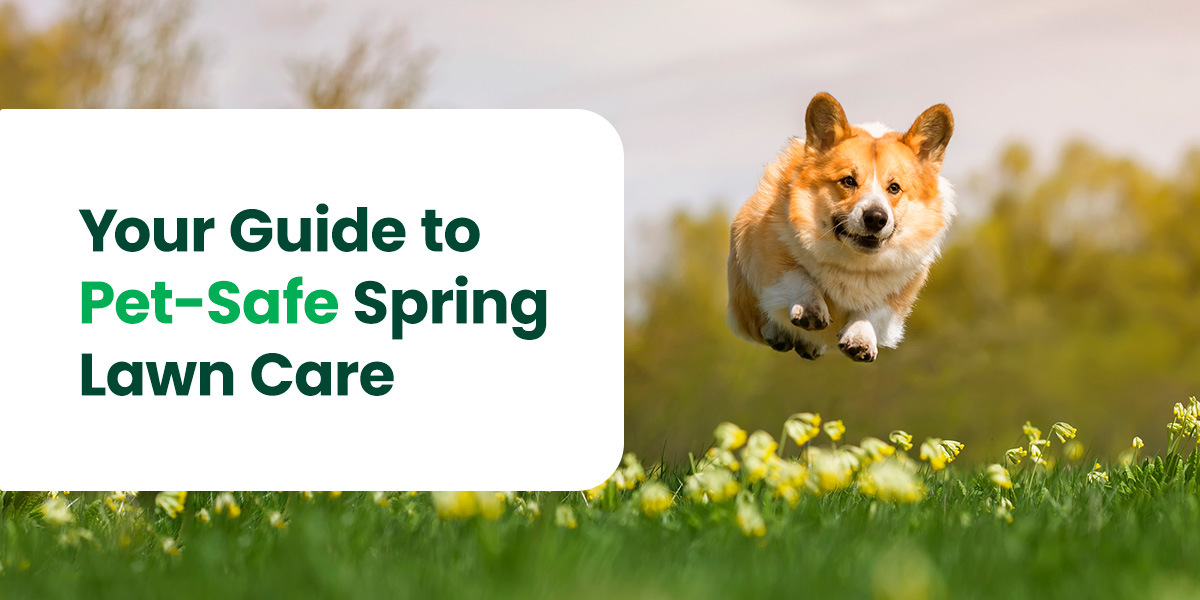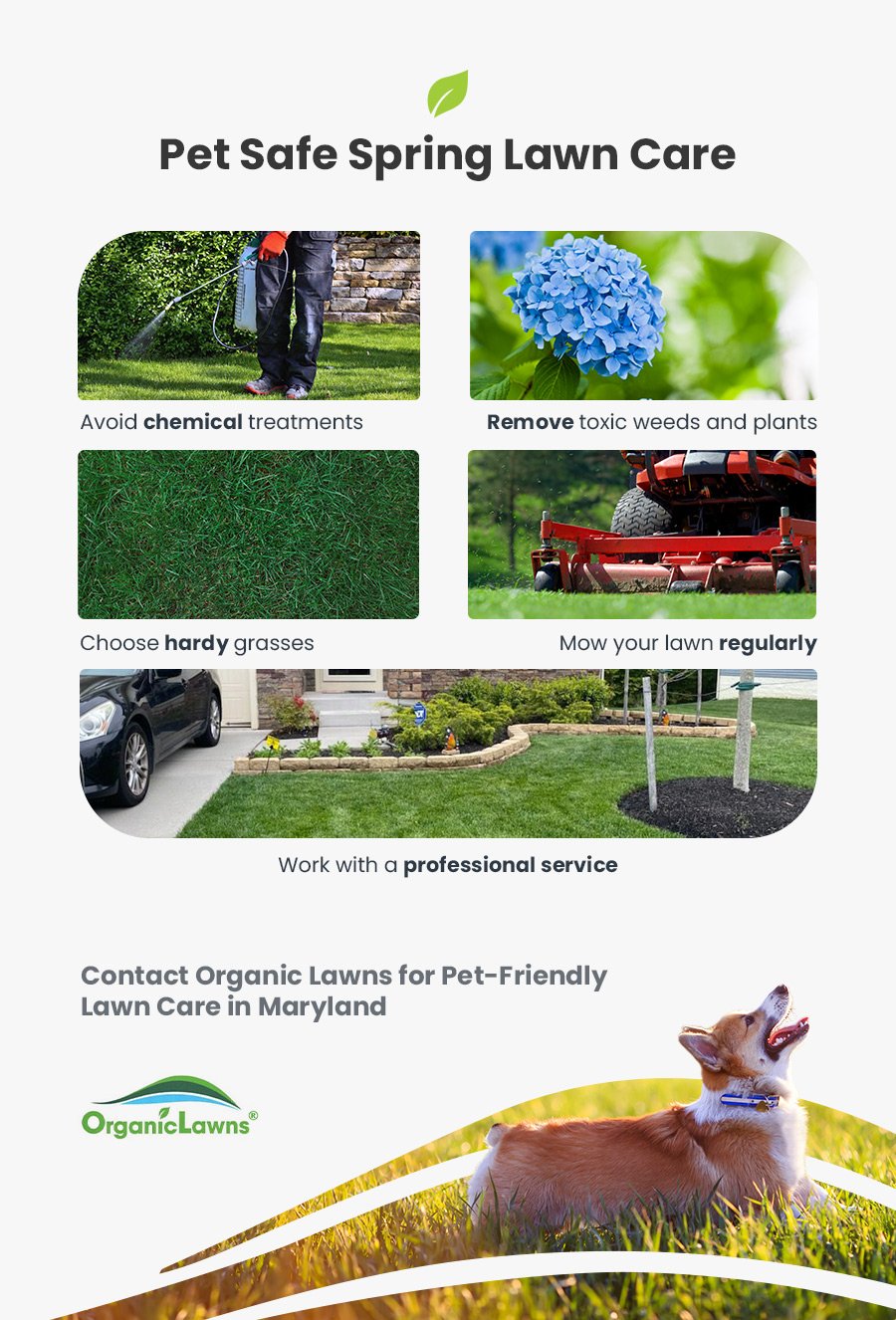

Keeping your lawn healthy, thriving and pet-friendly at the same time can be challenging. There are a lot of aspects you need to be aware of, such as toxic plants, chemical treatments and grass types.
As the winter snow melts and it starts to get warmer, you might find there’s a lot more in your yard to deal with it. With a little information and some dog tips for spring lawn care, you can gain confidence in your lawn’s health and pet’s safety.

Investing in a pet-friendly yard can seem like a lot of work, but taking the time to invest in the care and pet-friendliness of your yard will bring a lot of benefits, including:
Knowing these benefits, you might want to look at a few different ways you can start making your lawn safe for pets.
There is a lot to keep in mind when it comes to taking care of your lawn and making sure it’s safe for your pets. Whether you’re a first-time homeowner, recently acquired a new house or just got a new pet, the process can seem overwhelming at first glance. It can help to find some actionable steps to lead you through the lawn care journey.
Tips like avoiding chemical treatments, identifying toxic plants and finding the right grass types can be the small nudge you need to set the process into motion.
Here are some spring lawn care safety tips for pets:
If you can, avoid using chemical treatments on your lawn, as these can be harmful to your pets. Find pet-friendly alternatives that keep your yard healthy while avoiding dangerous chemicals. Though it’s simple, this is one of the most important spring organic lawn care tips. A professional can make the best dog-safe recommendations for your yard’s needs.
Many people might have a beautiful yard for their pets to roam in, but some are unaware that many of their plants may be toxic. Make sure you’re identifying what plants are growing on your property. Here are some common plants that are actually toxic for pets:
If you notice one of these plants is growing in your yard, make sure to either remove it or block it off with barriers so your pet cannot get to it. You can replace toxic plants with safe alternatives, such as:
Instill these safe plants in your yard to create a more welcoming area for your pet. This way, you can have confidence in their well-being as they roam about the yard.
Choose a type of grass that can withstand the constant thud of animal paws. A lot of people don’t pay attention to the type of grass in their yard, but it actually plays a large role in lawn health. Some hardy grass options include:
Choosing hardy grasses can offer great advantages for your yard. They’ll hold up well to heavy foot traffic, last throughout the season and ensure you won’t spend too much on frequent maintenance fixes.
Keeping your lawn at a short length will ensure you can avoid fleas and ticks that like to nest in thick, overgrown lawns. It’s also a good opportunity to scan your yard for any dangerous debris, like thorn bushes, branches or garbage. Whether you’re doing it yourself or using a service, make sure you’re mowing your lawn regularly to keep it safe for your pets.
These spring lawn care safety tips can help your get your lawn in great shape. However, this can be a challenging process — especially for those with big yards. It may be beneficial to get the help of a professional service to assist with the process. Enlisting professional services gives you several advantages over trying to do everything yourself:
You’ll be able to experience advantages like these when you work with a professional lawn service. Sometimes the challenging part might be finding a reliable company — OrganicLawns is ready to help.
When you need a professional service to help keep your lawn healthy and safe for pets, OrganicLawns is here to help. We offer a comprehensive set of services, including insect control, weed control and aeration and seeding that make your lawn safe for pet use. We’ll take some of the pressure off your shoulders and give you a convenient, effective service to keep your pets safe and your lawn healthy. Contact us today!